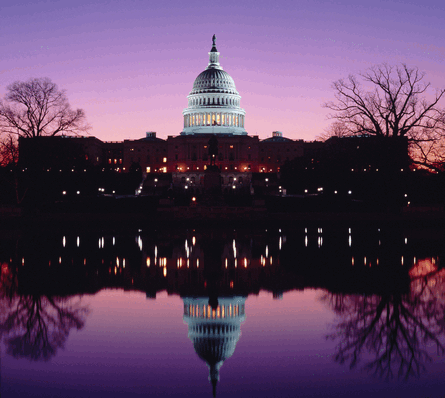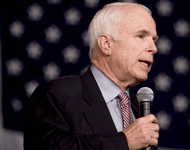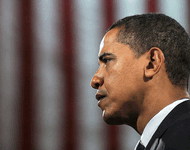Environmental issues, championed by the European parliament, could loom large in forthcoming EU-US Open Skies talks
Open skies architect John Byerly is a past master in the art and practice of establishing and continuing relations between nation states - he is also pretty adept at keeping his job.
Quizzed at a recent meeting of the European Aviation Club, the US deputy assistant secretary of state for transportation affairs refused to be drawn on how a new political broom may choose to sweep in climate change reform.
"I can't speak for a future administration," he told members, quipping that he said that in his capacity as a career diplomat and as someone who would like to remain one. "But one thing I can say is that neither the Republicans or Democrats would support the unilateral imposition of the European Union emissions trading scheme on US airlines.
 |
|---|
© REX Features |
"It would be a mistake for the EU to underestimate the reaction of forcing US airlines to participate in it. It's not simply an issue of Republicans versus Democrats," he added.
His words came ahead of second-stage open skies talks in Slovenia between an EU that is still gunning for the reciprocal removal of limits on airline ownership and a USA that is targeting a "modest but achievable" outcome.
Byerly said the USA wanted to see market forces advance and, despite consensus on "95%" of issues, he said environmental considerations could feature prominently in the fresh round of air transport liberalisation talks.
The USA's position on the EU's attempt to wrap global aviation into its existing emissions trading scheme remains unchanged. "We believe that the active discussions under way in the International Civil Aviation Organisation are the right place to tackle this important question. This is a global issue in a global industry that calls for a global solution."
He added that while the USA had no plans here at the opening round in Slovenia, any eventual discussions should be consistent with ICAO principles and centre on performance, not the adoption of a particular measure.
Crucially, Byerly added: "We do not rule out the possibility that environmental constraints on the exercise of traffic freedoms may figure in the second-stage negotiations."
Night Flight Concerns
That was diplomatic posturing the USA wants Europe to allay its concerns over night flight restrictions through the joint committee overseeing implementation of the first stage of open skies and hopes that the issue of harnessing aviation's emissions will be dealt with "satisfactorily" in the ongoing deliberative process in ICAO.
If these hopes are not fulfilled, the USA says it does not rule out the possibility that one or both of these issues will need to be addressed in the second-stage negotiations.
For his part the European Commission's chief negotiator Daniel Calleja Crespo says that even though there is a European legislative proposal to include aviation into emissions trading, actual measures have yet to be adopted at European level.
He nevertheless believes that Europe should be given credit for placing this on the global agenda and keeping up the pressure to embarrass the global aviation industry into action.
"As far as I am concerned, I think there is some new flexibility - in terms of equivalent measures from third countries from Australia, New Zealand and the USA. We certainly don't want to penalise countries twice over and it's generally agreed that emissions trading is a far better mechanism than taxes and charges."
In the latest procedural stage of the legislative proposal - the Council of Ministers last month formally adopted its common position following political agreement reached in December - Europe, acting at nation state level, emphasised the importance of seeking a global solution, as well as seeking "optimal interaction" between its scheme and equivalent schemes from third countries.
The US Presidential Candidates Take On Cap-and-Trade Schemes
Unlike President George Bush, all of his likely replacements favour some form of emissions trading. Both Democratic contendors - Senators Hilary Clinton and Barack Obama - vow to reduce greenhouse gas emissions by 80% by 2050 from 1990 levels. Republican frontrunner, Senator John McCain proposes to cut emissions by 60% below 1990 levels by 2050.
John McCain"The most direct way to achieve this is through a system that sets clear limits on all greenhouse gases, while also allowing the sale of rights to excess emissions. And this is the proposal I will submit to the Congress if I am elected president - a cap-and-trade system to change the dynamic of our energy economy."As a programme under the Clean Air Act, the cap-and-trade system achieved enormous success in ridding the air of acid rain. And the same approach that brought a decline in sulphur dioxide emissions can have an equally dramatic and permanent effect on carbon emissions." | Hilary Clinton"As president, I will put in place a market-based cap-and-trade system to reduce carbon pollution. Here's how it will work: the federal government auctions permits for 100% of the nation's carbon dioxide emissions. Companies purchase those allowances but they can be traded, borrowed, banked, bought, and sold. The market will determine the cost of carbon pollution and companies will be rewarded for cutting emissions." | Barack Obama"In addition to this cap, all polluters will have to pay based on the amount of pollution they release into the sky. The market will set the price, but unlike the other cap-and-trade proposals that have been offered in this race, no business will be allowed to emit any greenhouses gases for free. Businesses don't own the sky, the public does, and if we want them to stop polluting it, we have to put a price on all pollution. It's time to make the cleaner way of doing business the more profitable way of doing business." |
|---|---|---|
 |  |  |
Operating Ban
Even so, the Council strengthened it with a number of new provisions including monitoring and reporting plans, as well as the possibility of imposing an operating ban at community level on airlines that fail to comply with emissions trading scheme requirements.
The Council position does not however square with the far more environmentally ambitious opinion of the European Parliament, and so a second reading phase begins now, with rapporteur Peter Liese - the MEP charged with steering this proposal through the Parliament - showing every sign that it will defend its determined meanwhile.
In the USA, while senators prepare to debate emissions trading in June, it is doubtful a cap-and-trade system will become law this year as the outgoing Bush administration has threatened to veto such proposals.
Senators Joseph Lieberman and John Warner Jr introduced a bill in October to establish a domestic greenhouse gas trading scheme that would apply to transport, electric power and manufacturing. Lobbyists expect the bill to reach the senate floor as early as 2 June.
While there are at least 10 other climate change bills that could affect aviation - none specifically target airlines - the Lieberman-Warner Climate Security Act is the front-runner. "Everybody is waiting to see what happens with the Lieberman-Warner bill," says Nancy Young, the Air Transport Association of America's environmental affairs vice-president, adding it is the only climate change bill to get significant attention from the current Congress.
While unlikely to be signed into law under the current administration, should the Lieberman-Warner bill become law, the cap-and-trade proposal could cost US airlines $5 billion annually starting in 2012, escalating to $9 billion by 2020.
Young expects the trading scheme to make a comeback during the next Congress. She notes that all three presidential candidates have gone on record in favour of cap and trade
"We would hope to convince them that's the wrong policy for aviation even if it's the right policy for somebody else," she says.
Other potential climate change legislation could come from Senator George Voinovich. He has floated around a likely alternative to the Lieberman-Warner bill that focuses on technology in the short term and offers a cap-and-trade scheme in the long run if technology-based approaches do not pan out.
In the House of Representatives, Congressmen John Dingell and Rick Boucher have also prepared white papers discussing what they might propose about climate change.
Pressure to Act
As elected officials mull over various forms of environmental legislation, US regulators have also been pressured to take action.
The US Environmental Protection Agency (EPA) has been petitioned by various groups to set standards to regulate CO2 and other emissions from aircraft engines. While the EPA has established aircraft emission standards covering criteria pollutants for air quality in localities, its standards do not address CO2 and other greenhouse gases.
However, the agency has been under pressure from state governments and environmental groups to propose regulations to control greenhouse gas emissions caused by commercial aircraft. As a result, EPA will gather public comments if it should regulate greenhouse gas emissions - including emissions from aircraft engines - and if so, how.
The EPA will publish an advance notice of proposed rulemaking (ANPRM) by 21 June, according to the Office of Air and Radiation. Public comment will be accepted for 60-90 days
"We will request information on potentially available technological controls for aircraft and their engines and operational measures to reduce emissions - including information on what is feasible in the near or long term as well as relevant cost and safety information," says Robert Meyers, principal deputy assistant administrator for the Office of Air and Radiation.
However, it is unlikely the EPA will move beyond ANPRM this year and few expect a proposed rule during the Bush administration.
What worries US aviation far more, says Young, is the assumption that aviation can pass on emissions-generated costs to customers, with historical data showing ticket prices have not equalled the increase in fuel prices.
Small Sums
Jeff Gazzard of the UK-based GreenSkies Alliance insists these are small sums, hardly likely to cause the economic collapse of the entire US airline industry
"Trading and taxes are an opportunity to start controlling and reducing aviation emissions if we are serious about avoiding the worst impacts of climate change. Getting the cost right is vital and may well be more than $7.50 per ticket, leading inexorably to demand management - this may well mean somewhat less than 1.2 billion passengers flying on US airlines by 2020."
A pragmatic Jim May, the head of the Air Transport Association of America, says: "I've been around this town too long to expect to get an outright exemption or a pass from the Lieberman-Warner legislation. What we want is to start a constructive dialogue that will lead to legislative recognition in some way for the positive things we're doing."
USA Warns European Union on NoiseThe man heading open skies negotiations for the USA is warning that noise management around some European airports could feature in the second stage of US-European Union liberalisation talks if member states do not fall into line with the International Civil Aviation Organisation-approved "balanced approach".
John Byerly, US deputy assistant secretary of state for transportation affairs, says the wide interpretation within EU member states of globally accepted noise management principles continues to be high on the agenda when he meets his counterparts in the European Commission to discuss the implementation of the new transatlantic deal.
"We have growing concerns about the commitment to good-faith compliance with the 'balanced approach' in certain quarters of the EU. Night flight restrictions envisioned for the airports in Oporto, Frankfurt and Brussels, for example, appear to have been implemented or proposed based on political considerations, not the 'balanced approach'."
Byerly says the USA is raising its concerns within the joint committee established to oversee the implementation of the first phase of open skies, which came into effect in March.
"I can't preclude that the USA may seek more systemic, procedural commitments from the EU in the second stage. These could include a US proposal that the EU replace the noise directive with a more easily enforceable noise regulation," says Byerly.
He says the USA and EU committed explicitly in the first-stage deal to implement the so-called "balanced approach" to noise management adopted by ICAO and incorporated within an EC directive. This requires a cost-benefit analysis to be conducted before any restrictions are imposed.
Matthias Ruete, EC director general of transport, says the EC is preparing an impact analysis of possible amendments of its directive following the adoption of a recent report.
Source: Flight International























